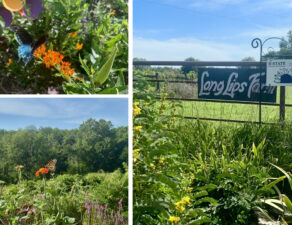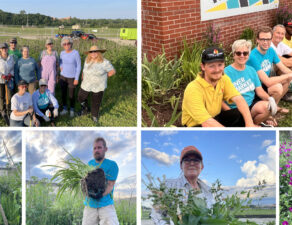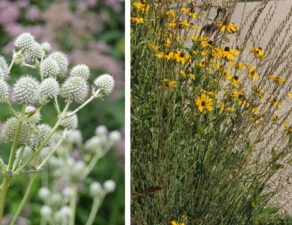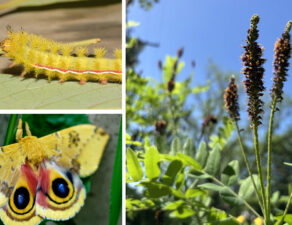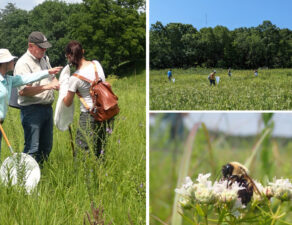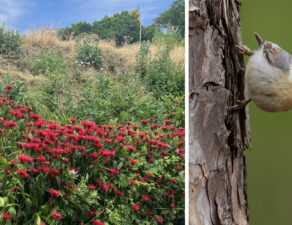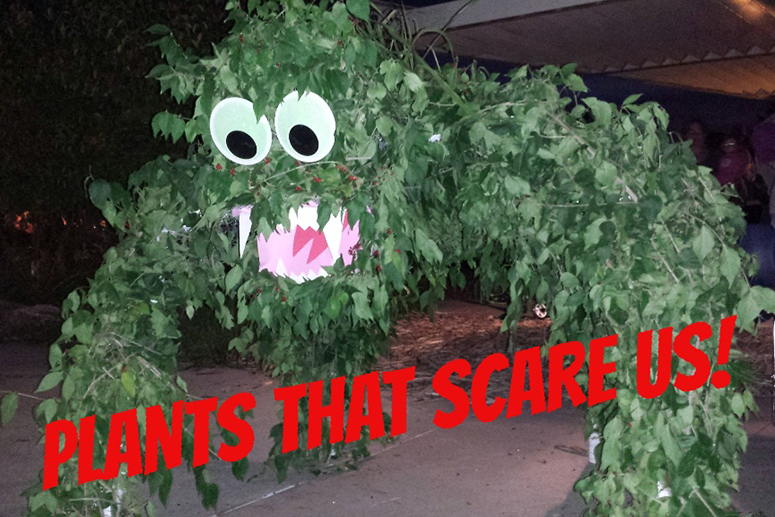
When your peaceful walk in the woods turns terrifying…
When your backyard garden party is invaded by leafy monsters…
When the smell of garlic surrounds you on the trail…
It can mean only one thing: An attack of the invasive plants! These mild-looking specimens, most perfectly behaved in their native lands, were brought to new ecosystems by humans, for landscaping, food, or erosion control. Once separated from their native environment and the predators and diseases they evolved with, they become aggressive- a Dr. Jekyl of immense biological harm. Left unchallenged they outcompete native species for nutrients and space and threaten all the species who depend on healthy ecosystems- including us.
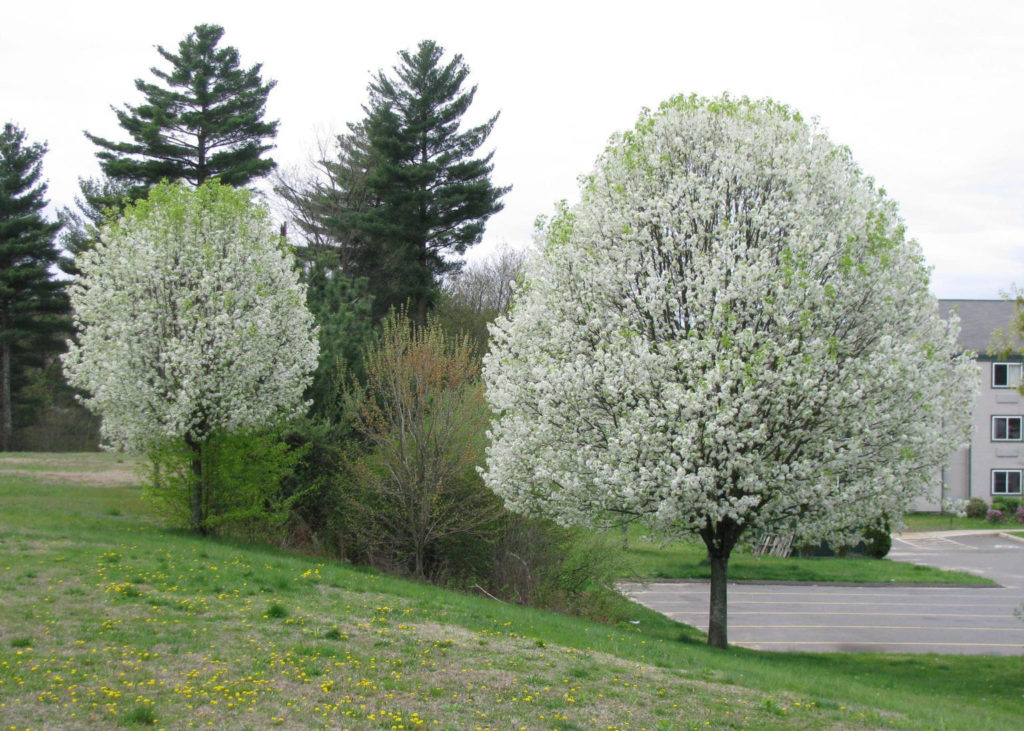
Callery (Bradford) Pear. Photo credit MU Extension.
Callery (Bradford) Pear
Pyrus calleryana
- Introduced from Asia and still sold under several different aliases – beware of common names!
- Ruthlessly invades all types of forests and prairies.
- White blooms smell like decaying fish… at best!
- Individual cultivars advertised as sterile, but cross-pollinates in suburban neighborhoods where birds readily disperse seeds.
- Escaped trees brandish huge, stabby thorns.
- Spreads rapidly, especially noticeable along suburban highways while in bloom.
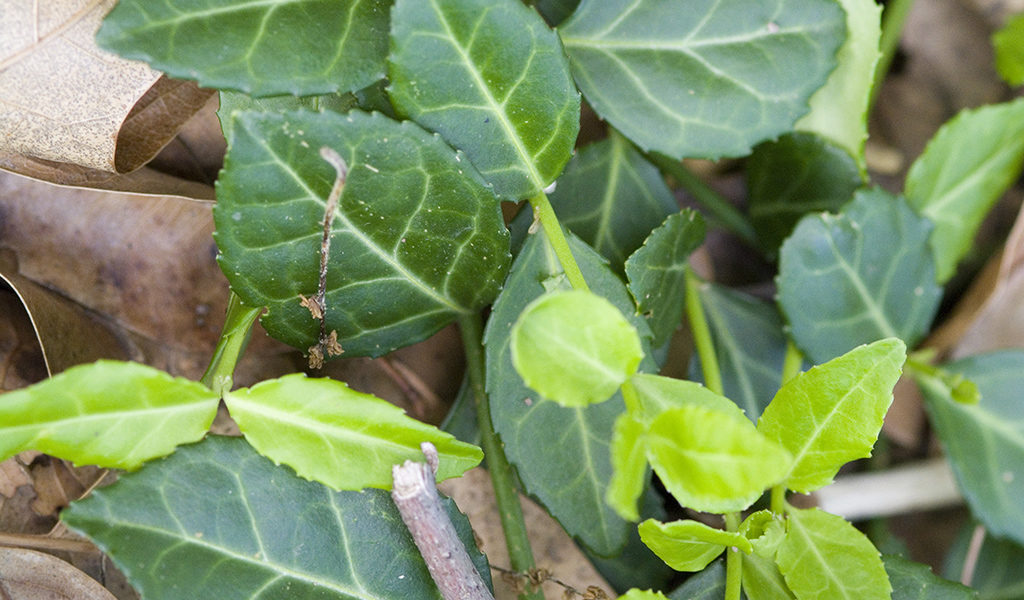
Wintercreeper. Photo courtesy Mary Nemecek
Wintercreeper
Euonymus fortunei
- Introduced from Asia. Long-recognized as invasive but still sold as a groundcover ????
- Extremely creepy- invades all types of forests
- Can overpower mature trees by shading – or even strangling them.
- Tolerates full sun, heavy shade, and most moisture conditions
- Spreads rapidly & replaces spring ephemerals
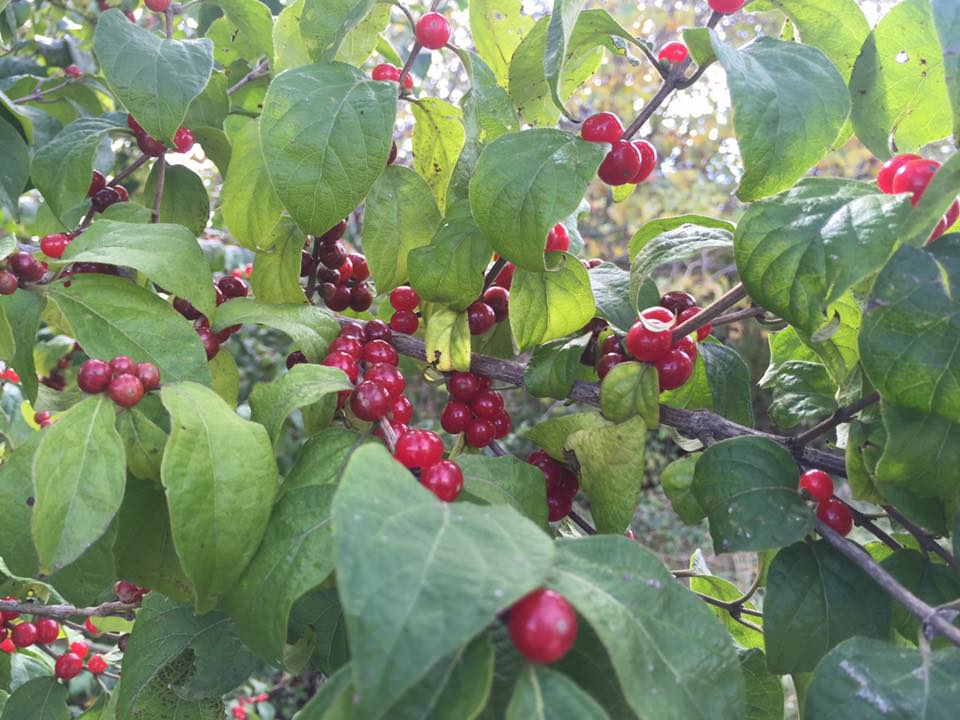
Shrub honeysuckle. Photo Sarah Beier
Shrub (Amur) Honeysuckle
Lonicera maackii
- Introduced from Asia
- Blooms early in Spring
- Red berries in September & October are dispersed by birds.
- Berries lack the fat and protein that native songbirds need in fall- eating honeysuckle is like gorging on Halloween candy before migration
- Lurks in forest understory, heavy concentrations are associated with larger populations of ticks and increased incidence of tick-borne illness.
- Leaves appear early in the spring and remain late into fall – shading out all natives and leaving dead zones under thick infestations

Tree-of-Heaven. Photo courtesy Wayne National Forest via flickr by creative commons license.
Tree-of-Heaven
Ailanthus altissima
-
- Native to parts of Asia
- Has a strong stench when a branch is broken – another common name is Stinking Tree
- Contact with the sap can cause health problems including myocarditis – inflammation of the heart- protect your skin when battling this beast!
- For success, you must kill the standing tree or risk hundreds of root sprouts rising up like zombies from the earth.
- See Tree-of-Heaven starring in its own horror film
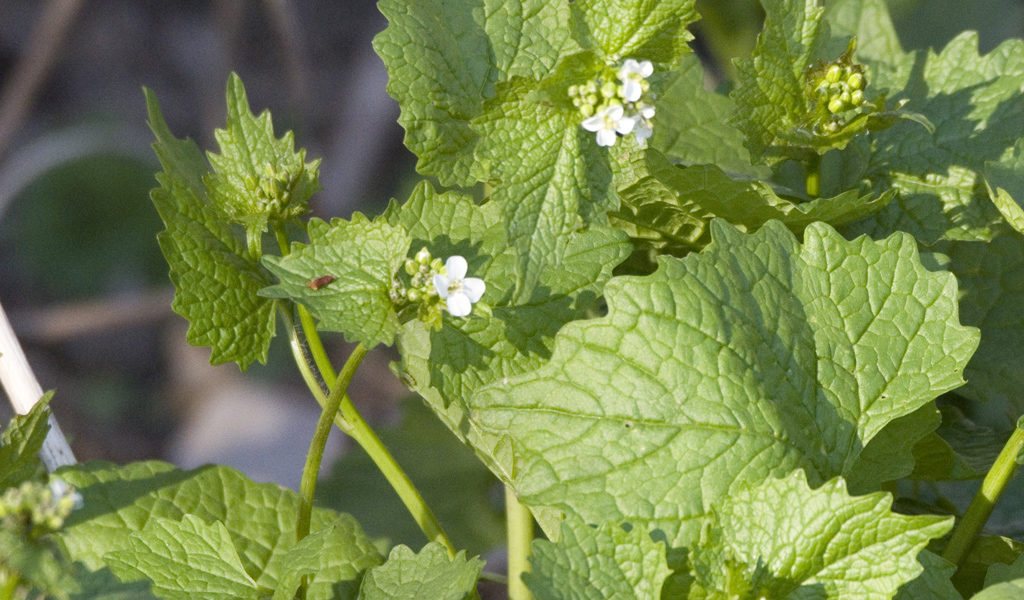
Garlic mustard. Photo courtesy Mary Nemecek.
Garlic Mustard
Alliaria petoilata
- Native to Europe and parts of Asia, introduced to North America as a culinary herb in the 1800s
- Biennial herb (takes two years to mature)
- Disrupts fungal relationships essential to native tree seedling growth.
- All parts of the plant have a strong garlic smell- vampires should seek professional assistance with removal.
- Remove garlic mustard by pulling it up from the root- spring is a great time to do this.
- Pulled plants should be bagged and sent to landfill – they may come back to life and produce seed if left to dry or composted.
To learn more about identifying and removing invasive plants, and find out how you can help protect native ecosystems, check out some of these shockingly good resources:
- Identify invasive plants with the Invasive Species Field Guide from Missouri Department of Conservation or the Kansas Native Plant Society Invasive Plants of Kansas List
- Find research and success stories from the Missouri Invasive Plant Task Force (MoIP) – supported by GrowNative! and the Missouri Prairie Foundation
- Plant This, Not That! from GrowNative! helps you find native alternatives for invasive and non-native landscape species.
- Get hands-on experience in invasive species removal at a KC WildLands volunteer workday.
Many thanks to Linda Lehrbaum and Mary Nemecek for contributions to this article.
